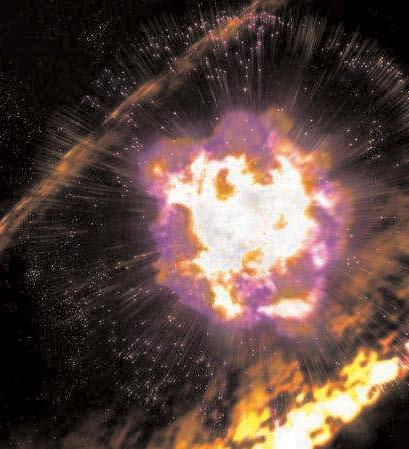
MELBOURNE (TIP): A series of massive supernova explosions near our solar system showered the Earth with radioactive debris between 3.2 and 1.7 million years ago, a new study has found.
Scientists found radioactive iron-60 in sediment and crust samples taken from the Pacific, Atlantic and Indian Oceans.
The iron-60 was concentrated in a period between 3.2 and 1.7 million years ago, which is relatively recent in astronomical terms, said Anton Wallner from The Australian National University (ANU).
“We were very surprised that there was debris clearly spread across 1.5 million years. It suggests there were a series of supernovae, one after another,” said Wallner.
“It’s an interesting coincidence that they correspond with when the Earth cooled and moved from the Pliocene into the Pleistocene period,” he said.
Researchers also found evidence of iron-60 from an older supernova around eight million years ago, coinciding with global faunal changes in the late Miocene.
A supernova is a massive explosion of a star as it runs out of fuel and collapses.
The scientists believe the supernovae in this case were less than 300 light years away, close enough to be visible during the day and comparable to the brightness of the Moon.
Although Earth would have been exposed to an increased cosmic ray bombardment, the radiation would have been too weak to cause direct biological damage or trigger mass extinctions.
The supernova explosions create many heavy elements and radioactive isotopes which are strewn into the cosmic neighbourhood.
One of these isotopes is iron-60 which decays with a half-life of 2.6 million years, unlike its stable cousin iron-56. Any iron-60 dating from Earth’s formation more than four billion years ago has long since disappeared.
The iron-60 atoms reached Earth in minuscule quantities and so the team needed extremely sensitive techniques to identify the interstellar iron atoms.
Scientists searched for interstellar dust from 120 ocean-floor samples spanning the past 11 million years. The first step was to extract all the iron from the ocean cores.
The team then separated the tiny traces of interstellar iron-60 from the other terrestrial isotopes and found it occurred all over the globe.
The age of the cores was determined from the decay of other radioactive isotopes, beryllium-10 and aluminium- 26, using accelerator mass spectrometry (AMS).
The dating showed the fallout had only occurred in two time periods, 3.2 to 1.7 million years ago and eight million years ago.
A possible source of the supernovae is an ageing star cluster, which has since moved away from Earth, researchers said.
The cluster has no large stars left, suggesting they have already exploded as supernovae, throwing out waves of debris.





Be the first to comment